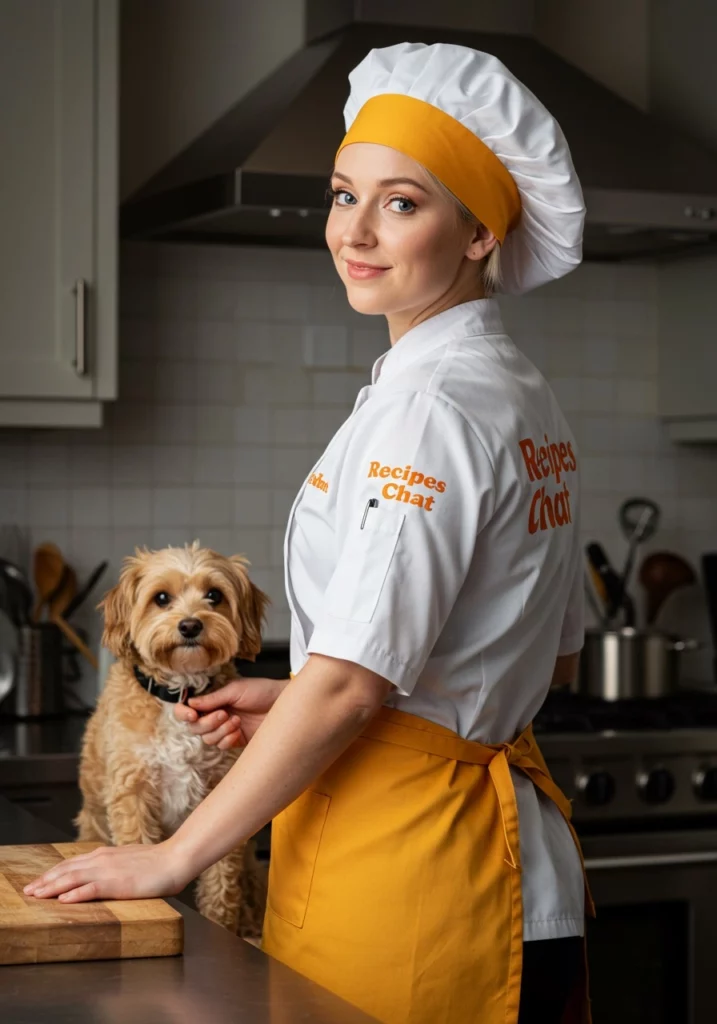There are few dishes as universally comforting and deeply satisfying as a classic Beef Pasta in Tomato Sauce. This isn’t just any weeknight spaghetti; this is a true Beef Ragu Pasta, a dish that speaks of slow-simmered love and rich, layered flavors. I remember the first time I truly perfected this recipe. The aroma filled my entire home—a warm, inviting scent of garlic, herbs, and savory beef melding with sweet, tangy tomatoes. It’s the kind of smell that brings everyone to the kitchen, peering into the pot with anticipation. The magic of this dish lies in its patience. While the active preparation is surprisingly quick, the long, slow simmer is where the transformation happens. The ground beef becomes incredibly tender, practically melting into a velvety, robust sauce that clings perfectly to every single piece of pasta. This recipe is my go-to for everything from cozy family dinners on a chilly evening to feeding a crowd of hungry guests. It’s hearty, wholesome, and feels like a warm hug in a bowl. Each bite is a perfect harmony of savory meat, bright tomato, fragrant herbs, and the satisfying chew of al dente pasta. It’s a timeless classic for a reason, and this version, carefully developed to be both accessible for beginners and deeply flavorful for seasoned cooks, will undoubtedly become a staple in your recipe collection. Forget the jarred stuff; the reward of creating this spectacular sauce from scratch is a culinary experience you’ll want to repeat again and again.
Ingredients
- 2 tablespoons olive oil
- 1 large yellow onion, finely chopped
- 2 large carrots, finely chopped
- 2 celery stalks, finely chopped
- 4 cloves garlic, minced
- 2 lbs (approx. 900g) lean ground beef (85/15 or 90/10 works well)
- 1 can (6 oz / 170g) tomato paste
- 2 cans (28 oz / 794g each) crushed tomatoes
- 1 cup (240ml) beef broth (low sodium)
- 2 teaspoons dried oregano
- 1 teaspoon dried basil
- 1/2 teaspoon dried thyme
- 1 teaspoon granulated sugar (optional, to balance acidity)
- Salt and freshly ground black pepper to taste
- 1 lb (450g) pasta of your choice (such as pappardelle, tagliatelle, rigatoni, or penne)
- Freshly grated Parmesan cheese, for serving
- Fresh basil or parsley, chopped, for garnish
Instructions
- Prepare the Soffritto: Heat the olive oil in a large, heavy-bottomed pot or Dutch oven over medium heat. Add the finely chopped onion, carrots, and celery. This mixture is known as a “soffritto” and forms the aromatic base of your sauce. Cook, stirring occasionally, for about 8-10 minutes, or until the vegetables have softened and the onion is translucent. Do not rush this step; sweating the vegetables slowly builds a deep, sweet flavor foundation.
- Add the Garlic: Add the minced garlic to the pot and cook for another minute until fragrant. Be careful not to let the garlic burn, as it can become bitter.
- Brown the Beef: Increase the heat to medium-high, add the ground beef to the pot. Break it up with a wooden spoon and cook until it’s thoroughly browned. This searing process, known as the Maillard reaction, creates a rich, savory crust on the meat that is essential for a flavorful ragu. Once browned, drain off any excess fat from the pot.
- Deepen the Flavor with Tomato Paste: Add the tomato paste to the pot. Stir it into the beef and vegetable mixture and cook for 2-3 minutes. “Toasting” the tomato paste like this caramelizes its sugars, removing any raw, tinny taste and creating a much deeper, more complex tomato flavor.
- Build the Sauce: Pour in the beef broth, using your spoon to scrape up any browned bits from the bottom of the pot (this is called deglazing and adds a ton of flavor). Stir in the crushed tomatoes, dried oregano, dried basil, dried thyme, and the optional sugar. The sugar helps to balance the natural acidity of the tomatoes.
- Simmer to Perfection: Bring the sauce to a gentle bubble, then reduce the heat to low. Season generously with salt and freshly ground black pepper. Cover the pot and let the sauce simmer for at least 1.5 hours, though 2-3 hours is even better. The longer it simmers, the more the flavors will meld and the more tender the beef will become. Stir the sauce every 20-30 minutes to prevent it from sticking to the bottom of the pot.
- Cook the Pasta: About 20 minutes before you’re ready to serve, bring a large pot of salted water to a rolling boil. Add your pasta and cook according to package directions until it is al dente (cooked through but still with a firm bite).
- Combine and Serve: Before draining the pasta, reserve about one cup of the starchy pasta water. Drain the pasta well. You can either add the drained pasta directly to the pot with the beef ragu, tossing to combine, or you can plate individual portions of pasta and spoon the sauce generously over the top. If the sauce seems too thick, add a splash of the reserved pasta water to thin it to your desired consistency. The starch in the water helps the sauce cling beautifully to the pasta.
- Garnish and Enjoy: Serve the Beef Ragu Pasta hot, garnished with a generous amount of freshly grated Parmesan cheese and a sprinkle of chopped fresh basil or parsley.
Nutrition Facts
This Beef Ragu Pasta recipe offers a well-rounded nutritional profile, providing a substantial amount of protein from the beef, complex carbohydrates from the pasta for energy, and essential vitamins from the tomato and vegetable base. It’s a hearty and satisfying meal perfect for refueling after a long day.
- Servings: 8
- Calories per serving: Approximately 580 kcal
- Protein: 35g
- Carbohydrates: 60g
- Fat: 22g
- Fiber: 7g
Preparation Time
While this recipe involves a long simmer to achieve its signature deep flavor, the active hands-on time is quite manageable. Most of the duration is spent letting the sauce work its magic on the stovetop, making it an ideal weekend cooking project or a dish you can start in the late afternoon for dinner.
- Prep time: 20 minutes
- Cook time: 2 hours
- Total time: 2 hours 20 minutes
How to Serve
- Classic Parmesan: The most essential topping is a generous snowfall of freshly grated Parmesan or Pecorino Romano cheese. The salty, nutty flavor cuts through the richness of the sauce perfectly.
- Fresh Herbs: A sprinkle of chopped fresh basil or flat-leaf parsley right before serving adds a burst of freshness and color.
- Creamy Ricotta: For an extra touch of luxury, add a dollop of fresh, creamy ricotta cheese on top of each serving. It melts slightly into the hot sauce, creating pockets of creaminess.
- Simple Green Salad: Balance the hearty pasta with a simple side salad of mixed greens, cucumber, and cherry tomatoes, dressed in a light lemon vinaigrette.
- Crusty Bread: A side of warm, crusty bread or garlic bread is non-negotiable for soaking up every last bit of the delicious ragu from the bowl.
- A Drizzle of Olive Oil: Finish with a light drizzle of high-quality extra virgin olive oil to enhance the flavors and add a glossy sheen.
Additional Tips
- Make-Ahead Magic: This beef ragu is the perfect make-ahead dish. In fact, the flavor is often even better the next day as the ingredients have more time to meld together. Prepare the sauce completely, let it cool, and store it in an airtight container in the refrigerator for up to 4 days. Reheat gently on the stovetop before tossing with freshly cooked pasta.
- Freezer-Friendly Sauce: Double the sauce recipe and freeze half for a future meal. Allow the sauce to cool completely, then transfer it to freezer-safe bags or containers. It can be frozen for up to 3 months. Thaw it overnight in the refrigerator before reheating.
- Pasta Water is Liquid Gold: Never discard all of your pasta water. The starchy, salty water is an incredible emulsifier. When you combine the pasta and sauce, if it seems a bit dry or isn’t clinging well, add a few tablespoons of the reserved pasta water. It will help create a silkier, more cohesive sauce that coats every noodle perfectly.
- Choose Your Beef Wisely: The type of ground beef you use can impact the final result. A lean ground beef like 90/10 is a great healthy option. However, using an 85/15 blend will result in a slightly richer, more flavorful sauce due to the higher fat content. If you use a higher-fat beef, just be sure to drain the excess grease thoroughly after browning.
- Customize with Vegetables: Don’t be afraid to add more vegetables to the soffritto base. Finely chopped mushrooms, zucchini, or even red bell peppers can be added along with the onions and carrots to boost the nutritional value and add another layer of flavor. Sauté them until they are soft before adding the beef.
Budgeting the Recipe
One of the best aspects of this Beef Ragu Pasta is how incredibly budget-friendly it can be, especially considering it yields a large, satisfying amount of food. The core components—ground beef, dried pasta, and canned tomatoes—are often economical pantry staples. Buying ground beef in larger family packs can often reduce the per-pound cost, and you can freeze any extra for later use. Canned crushed tomatoes and tomato paste are significantly cheaper than fresh, out-of-season tomatoes and provide a more consistent, concentrated flavor for sauces like this.
To further stretch your budget, consider making a double batch of the sauce. The cost of ingredients doesn’t double linearly, as you’ll already have the herbs and other pantry items on hand. Freezing the extra sauce provides a quick, home-cooked meal for a busy night, saving you from more expensive takeout options. Using dried herbs is far more cost-effective than fresh for a long-simmered sauce, as their flavor holds up well to heat. This recipe is a perfect example of how simple, affordable ingredients can be transformed into a rich, impressive meal that feeds a family generously, with leftovers to spare.
Frequently Asked Questions
Q: Can I use a different type of pasta for this recipe?
A: Absolutely! While a long, wide pasta like pappardelle or tagliatelle is traditional for ragu because it holds the chunky sauce well, this recipe is fantastic with many shapes. For a shorter pasta, try a tube shape with ridges like rigatoni or penne, as the sauce gets trapped inside and on the surface. Even classic spaghetti or bucatini will work wonderfully.
Q: How do I properly store and reheat leftovers?
A: Store leftover beef pasta in an airtight container in the refrigerator for up to 3-4 days. For best results when reheating, place the desired portion in a saucepan over medium-low heat. Add a splash of water or beef broth to loosen the sauce and prevent it from drying out, and stir gently until heated through. You can also reheat it in the microwave, stopping to stir every minute or so.
Q: Can I make this beef ragu in a slow cooker or Instant Pot?
A: Yes, this recipe adapts well to both. For a slow cooker, complete steps 1-4 on the stovetop (sautéing vegetables, browning beef, toasting tomato paste). Then, transfer everything to the slow cooker, add the remaining sauce ingredients, and cook on low for 6-8 hours or on high for 3-4 hours. For an Instant Pot, use the ‘Sauté’ function for steps 1-4. Then, add the remaining sauce ingredients, seal the lid, and cook on high pressure for 35 minutes, followed by a natural pressure release for at least 10 minutes.
Q: My tomato sauce tastes a bit too acidic. How can I fix it?
A: Tomato acidity can vary. The teaspoon of sugar in the recipe is designed to help, but if your sauce is still too sharp, you have a couple of options. You can stir in another 1/2 teaspoon of sugar at a time, tasting as you go. Alternatively, a tiny pinch (less than 1/4 teaspoon) of baking soda can neutralize the acid. Be very careful, as too much can affect the taste. A small pat of butter or a splash of heavy cream stirred in at the end can also mellow out the acidity and add richness.
Q: What is the difference between a ragu and a bolognese?
A: The terms are often used interchangeably, but there are subtle traditional differences. A classic Ragu alla Bolognese from Bologna, Italy, is a very specific meat-based sauce that often includes different types of meat (like pork and veal), pancetta, a small amount of tomato, milk or cream, and white wine. A “ragu” is a more general Italian term for any slow-cooked, meat-based sauce. Therefore, this recipe is a type of beef ragu, but not a traditional Bolognese since it uses only beef, no dairy or wine, and has a more prominent tomato base.
PrintBeef Pasta in Tomato Sauce {Beef Ragu Pasta}
- Total Time: 2 hours 20 minutes
- Yield: 8 servings
Description
This Beef Ragu Pasta recipe offers a well-rounded nutritional profile, providing a substantial amount of protein from the beef, complex carbohydrates from the pasta for energy, and essential vitamins from the tomato and vegetable base. It’s a hearty and satisfying meal perfect for refueling after a long day. While this recipe involves a long simmer to achieve its signature deep flavor, the active hands-on time is quite manageable. Most of the duration is spent letting the sauce work its magic on the stovetop, making it an ideal weekend cooking project or a dish you can start in the late afternoon for dinner.
Ingredients
Olive oil: 2 tablespoons or unsalted butter
Large yellow onion: 1, finely chopped
Large carrots: 2, finely chopped
Celery stalks: 2, finely chopped
Garlic: 4 cloves, minced
Lean ground beef: 2 lbs (approx. 900g), 85/15 or 90/10 works well
Tomato paste: 1 can (6 oz / 170g)
Crushed tomatoes: 2 cans (28 oz / 794g each)
Beef broth: 1 cup (240ml), low-sodium
Dried oregano: 2 teaspoons
Dried basil: 1 teaspoon
Dried thyme: 1/2 teaspoon
Granulated sugar (optional, to balance acidity): 1 teaspoon
Salt and freshly ground black pepper to taste
Pasta of your choice: 1 lb (450g) (such as pappardelle, tagliatelle, rigatoni, or penne)
Freshly grated Parmesan cheese, for serving
Fresh basil or parsley, chopped, for garnish
Instructions
1. Prepare the Soffritto: Heat the olive oil in a large, heavy-bottomed pot or Dutch oven over medium heat. Add the finely chopped onion, carrots, and celery. This mixture is known as a “soffritto” and forms the aromatic base of your sauce. Cook, stirring occasionally, for about 8-10 minutes, or until the vegetables have softened and the onion is translucent. Do not rush this step; sweating the vegetables slowly builds a deep, sweet flavor foundation.
2. Add the Garlic: Add the minced garlic to the pot and cook for another minute until fragrant. Be careful not to let the garlic burn, as it can become bitter.
3. Brown the Beef: Increase the heat to medium-high, add the ground beef to the pot. Break it up with a wooden spoon and cook until it’s thoroughly browned. This searing process, known as the Maillard reaction, creates a rich, savory crust on the meat that is essential for a flavorful ragu. Once browned, drain off any excess fat from the pot.
4. Deepen the Flavor with Tomato Paste: Add the tomato paste to the pot. Stir it into the beef and vegetable mixture and cook for 2-3 minutes. “Toasting” the tomato paste like this caramelizes its sugars, removing any raw, tinny taste and creating a much deeper, more complex tomato flavor.
5. Build the Sauce: Pour in the beef broth, using your spoon to scrape up any browned bits from the bottom of the pot (this is called deglazing and adds a ton of flavor). Stir in the crushed tomatoes, dried oregano, dried basil, dried thyme, and the optional sugar. The sugar helps to balance the natural acidity of the tomatoes.
6. Simmer to Perfection: Bring the sauce to a gentle bubble, then reduce the heat to low. Season generously with salt and freshly ground black pepper. Cover the pot and let the sauce simmer for at least 1.5 hours, though 2-3 hours is even better. The longer it simmers, the more the flavors will meld and the more tender the beef will become. Stir the sauce every 20-30 minutes to prevent it from sticking to the bottom of the pot.
7. Cook the Pasta: About 20 minutes before you’re ready to serve, bring a large pot of salted water to a rolling boil. Add your pasta and cook according to package directions until it is al dente (cooked through but still with a firm bite).
8. Combine and Serve: Before draining the pasta, reserve about one cup of the starchy pasta water. Drain the pasta well. You can either add the drained pasta directly to the pot with the beef ragu, tossing to combine, or you can plate individual portions of pasta and spoon the sauce generously over the top. If the sauce seems too thick, add a splash of the reserved pasta water to thin it to your desired consistency. The starch in the water helps the sauce cling beautifully to the pasta.
9. Garnish and Enjoy: Serve the Beef Ragu Pasta hot, garnished with a generous amount of freshly grated Parmesan cheese and a sprinkle of chopped fresh basil or parsley.
- Prep Time: 20 minutes
- Cook Time: 2 hours
- Category: Main Course, Italian, Pasta
- Method: Sautéing, Simmering
- Cuisine: Italian
Nutrition
- Serving Size: 1 serving
- Calories: Approximately 580 kcal
- Sugar: N/A
- Sodium: N/A
- Fat: 22g
- Saturated Fat: N/A
- Unsaturated Fat: N/A
- Trans Fat: N/A
- Carbohydrates: 60g
- Fiber: 7g
- Protein: 35g
- Cholesterol: N/A






